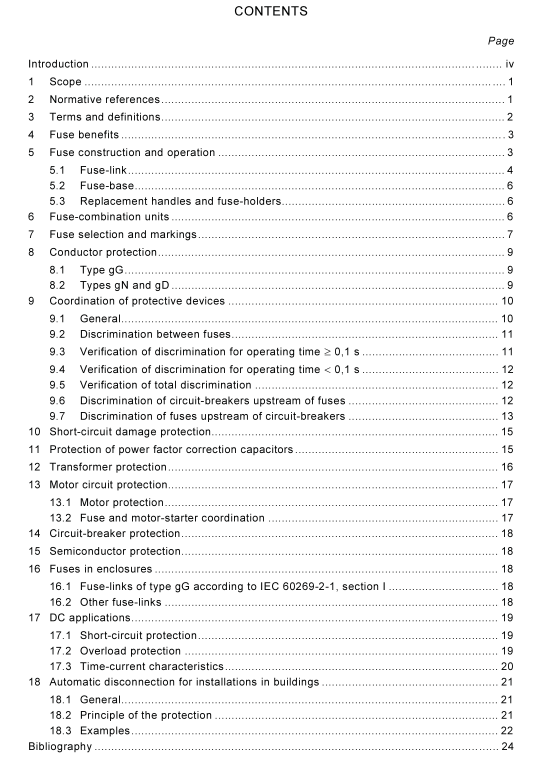AS 61818 pdf download – Application guide for low-voltage fuses

AS 61818 pdf download – Application guide for low-voltage fuses
4Fuse benefits
The current-limiting fuse provides complete protection against the effects of overcurrents byprotecting both electric circuits and their components. Fuses offer a combination ofexceptional features, for example:
a) High breaking capacity (current interrupting rating).b) No need for complex short-circuit calculations.
c) Easy and inexpensive system expansion involving increased fault currents.d) Mandatory fault elimination before resetting.
Unlike other short-circuit protective devices (SCPD), fuses cannot be reset,thus forcingthe user to identify and correct the overcurrent condition before re-energizing the circuit.e)Reliability.
No moving parts to wear out or become contaminated by dust, oil or corrosion. Fusereplacement ensures protection is restored to its original state of integrity.
f)cost effective protection.
Compact size offers low cost overcurrent protection at high short-circuit levels.g)No damage for type 2 protection according to lEC 60947-4-1.
By limiting short-circuit energy and peak currents to extremely low levels,fuses areparticularly suitable for type 2 protection without damage to components in motorcircuits. This type of protection may be achieved without installing a fuse with a smallerampere rating.
h) Safe, silent operation.
No emission of gas, flames, arcs or other materials when clearing the highest levels ofshort-circuit currents. In addition,the speed of operation at high short-circuit currentssignificantly limits the arc flash hazard at the fault location.
i)Easy coordination.
Standardized fuse characteristics and a high degree of current limitation ensureeffective coordination between fuses and other devices.
j)Standardized performance
Fuse-links according to lEc 60269 ensure availability of replacements with standardizedcharacteristics throughout the world.
k) lmproved power supply quality.
Current-limiting fuses interrupt high fault currents in a few milliseconds,minimizing dipsin system supply voltage.
lTamperproof.
Once installed, fuses cannot be modified or adjusted in order to change their level ofperformance, thus malfunction is avoided.
5Fuse construction and operation
A fuse is a protective device comprising
-the fuse-link,
一the fuse-base,
the fuse-carrier or replacement handle.
5.1 Fuse-link Figures 1 and 2 show the design of typical low voltage fuse-links for industrial application. Such fuse-links are commonly called current-limiting or high breaking capacity fuse-links. Fuse-links according to IEC 60269-2-1 (fuses for industrial application) shall have a breaking capacity of at least a.c. 50 kA or 25 kA d.c. at current ratings from 2 A to 6 000 A. Fuse-links according to IEC 60269-3-1 (fuses for household application) cover current ratings from 2 A to 1 00 A with a breaking capacity of at least a.c. 6 kA.
5.1.1 Fuse-element The fuse-element is usually made of flat silver or copper with restrictions in the cross-section. This restriction pattern is one of the important features of fuse design, normally achieved by precision stamping. M-effect material is added to the fuse-element to achieve controlled fuse operation in the overload range. The purity of the fuse-element materials and their precise physical dimensions are of vital importance for reliable fuse operation.









